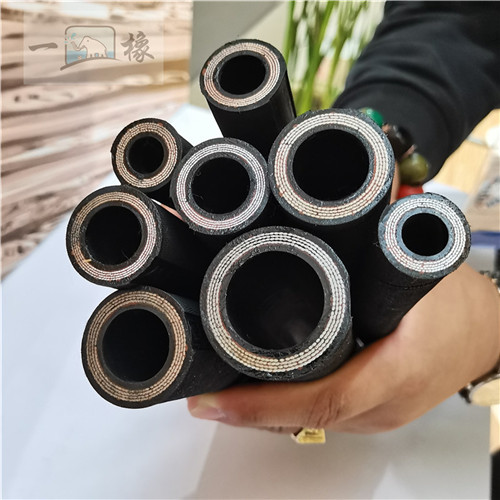335345435
Oct . 04, 2024 14:26 Back to list
25mm hydraulic hose
Understanding 25mm Hydraulic Hoses A Comprehensive Guide
Hydraulic hoses are crucial components in various industries, including construction, manufacturing, and agriculture. They are designed to convey hydraulic fluid, transferring energy and power between different parts of machinery. One of the common specifications for hydraulic hoses is 25mm in diameter. In this article, we will delve into the significance of 25mm hydraulic hoses, their applications, and maintenance practices to ensure longevity and reliability.
What is a 25mm Hydraulic Hose?
A 25mm hydraulic hose is a flexible tube designed to transport hydraulic fluid in various machinery and equipment. The measurement of 25mm refers to the internal diameter of the hose, which is approximately 1 inch. This diameter allows for a significant flow rate, making 25mm hoses suitable for demanding applications that require the efficient transfer of hydraulic fluid under pressure.
Applications of 25mm Hydraulic Hoses
Due to their size and strength, 25mm hydraulic hoses are commonly used in a variety of fields
2. Agricultural Machinery Tractors and harvesters use hydraulic hoses to operate implements and attachments, ensuring efficient farming operations.
3. Manufacturing In factories, hydraulic systems powered by 25mm hoses are used in presses, forklifts, and assembly lines, facilitating the smooth operation of industrial processes.
4. Automotive Applications Hydraulic hoses are also crucial in motor vehicles, particularly in systems like power steering and braking.
Key Features of 25mm Hydraulic Hoses
25mm hydraulic hose

The construction and materials of 25mm hydraulic hoses are vital for their performance and durability. Typically made from synthetic rubber or thermoplastic, these hoses are reinforced with layers of textile or steel wire to withstand high pressure and external abrasion. Additionally, hoses may come with a weather-resistant outer layer to protect against environmental factors.
Maintenance Tips for Longevity
To ensure the longevity and reliability of 25mm hydraulic hoses, regular maintenance is essential
1. Visual Inspection Regularly check for signs of wear, abrasions, or leaks. Addressing minor issues early can prevent more significant problems later.
2. Proper Routing Ensure that hoses are routed correctly, avoiding sharp bends or kinks that can restrict flow or lead to premature failure.
3. Fluid Quality Use high-quality hydraulic fluid that meets the equipment's specifications. Contaminated or degraded fluid can damage the hoses and the entire hydraulic system.
4. Temperature Considerations Be mindful of the operating temperature. Excessive heat can degrade hose materials over time.
5. Replacement Schedule Establish a routine for replacing hoses based on usage and manufacturer recommendations, as even the best hoses have a finite lifespan.
Conclusion
25mm hydraulic hoses play a vital role in the efficient operation of various machines across multiple industries. Understanding their applications, features, and maintenance practices is essential for operators and technicians. By taking proper care of hydraulic hoses, one can ensure that machinery operates smoothly, ultimately contributing to increased productivity and reduced downtime.
-
SAE 100 R17 Black Smooth Cover Hydraulic Hose
NewsMar.07,2025
-
SAE 100 R17 Black Smooth Cover Hydraulic Hose
NewsMar.07,2025
-
SAE 100 R17 Black Smooth Cover Hydraulic Hose
NewsMar.07,2025
-
SAE 100 R17 Black Smooth Cover Hydraulic Hose
NewsMar.07,2025
-
SAE 100 R17 Black Smooth Cover Hydraulic Hose
NewsMar.07,2025
-
steel wire braided hydraulic hose
NewsMar.07,2025



